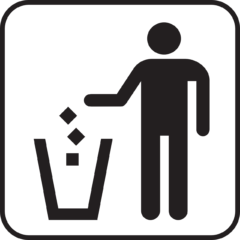How to Become a “Thought-Leader” with Your Dental Content and Increase Your Influence
Recent collaboration with a dental industry client revealed something about their content. And the principle has value for how you view your dental content and copy across all your platforms.
We were importing a new template on our project management platform. Time came to label a category having to do with our editorial calendar. “Thought leadership” appeared to be the obvious tag.
That got me to thinking about the attitude you should have about the content you create to market your dental practice or dental industry services.
It’s about being a thought-leader.
Not all “thought leadership” is worthy
You might have seen a viral video a few months ago. It featured a baby bear attempting to navigate a steep, snow packed cliff to reach its mother.
Millions of people saw the video and were inspired by it. Such triumph and strength against the odds of nature.
That was one perspective…shared by millions!
A contrary opinion was formed. It separated one thought leader from the crowd of admirers.
”Science writer Ed Yong saw it differently… Writing in The Atlantic, he described it as a worrisome example of drone-mounted cameras harassing wildlife. To animal experts, several moments in the video show the mother bear reacting to the too-close drone rather than interacting with her cub.
Marketing expert and mentor, Marcia Yudkin, continues her observation of Yong’s perspective,
I appreciate Yong’s article because it provided unexpected perspective on a seemingly harmless story or idea.
And here’s the jewel…
If you can dish up those kind of ‘Yes, but…’ insights to your audience, you’ll attract thoughtful fans and experience growing influence.
Yong did this without scolding the uninformed admirers of the video, and you should do so as well.
Identify a popular or trending belief that doesn’t mesh with what you know.
Explain your deeper angle in the tone of ‘What you probably didn’t realize is…,’ ‘Unfortunately…’ or ‘The problem here is…’
This is thought leadership at its finest.” 1
How “Yes…But” Thought Leadership Turns Contrary Ideas Into Useful Content That Builds Loyalty with Your “Tribe”
Identify, clarify, and leverage your unique point-of-view (POV)
You have solutions to problems…answers to questions…and more. Therein lies the core of your dental content strategy.
Gone are the days of writing to an “empty room.” The dental seeking public is rich with questions you can answer and problems begging for a solution.
You’re the expert. And more important – you have a POV!
- Start with the question. Thought leadership has as much or more to do with listening than it does sounding-off on dental-speak. Harvest as many questions as possible (by listening) through conversations, consultations, email, and social media.
- Share your answers and solve problems. Thought leadership is relevant to what your patients want to know and need to know. Create content that relieves the tension and emotional needs of your audience.
Think of your content like a tribal fire. Your “tribe” will feel safe in the warmth of your expertise.
The good news…they could look no further than YOUR thought-leadership!
Take a contrarian approach and fearlessly share your POV (without judgement)
The recent Netflix root canal documentary is a good example. Sure, as a dental professional you can take offense and voice your opinion as many did. Or you can be a contrarian voice and use the albeit alleged inaccuracies as content seeds.
- Answer the questions and doubts that emerge around dental myths, dental services, or dentistry in general. There’s plenty of related opinions. Dispel them (graciously and professionally) as a thought-leader.
- Invite dialogue by being unafraid to take on controversial topics. But always do so not as antagonist…rather as a professional, skilled expert.
Provoke questions and create solutions to problems that compel action.
The sign of a good leader isn’t always how they respond but also the depth and compelling nature of the questions they ask. Always providing answers and opinions can shut down communication more than it opens it to opportunity.
I once heard Jim Collins (bestselling author of Good to Great and Built to Last) say during a lecture something to this effect. He viewed his skilled research and the questions it raised as the careful placement of a grain of sand in the minds of his readers. That solitary grain of sand was strategically designed to “irritate” their thinking.
Worth noting is that pearls begin that way. A grain of sand within an oyster elicits the healing process that layer upon layer forms a pearl.
Your questions are “grains of sand” not to necessarily irritate but to promote healing.
- Ask questions that reveal the emotional desires of your patients or clients. Within their answers are content “pearls” that can lead to compelling outcomes for your audience.
- Always be solving problems. Essentially that’s the business of thought-leadership.
Anyone can create content. But…being a thought-leader and influencer requires that you have a point-of-view that you fearlessly communicate.







